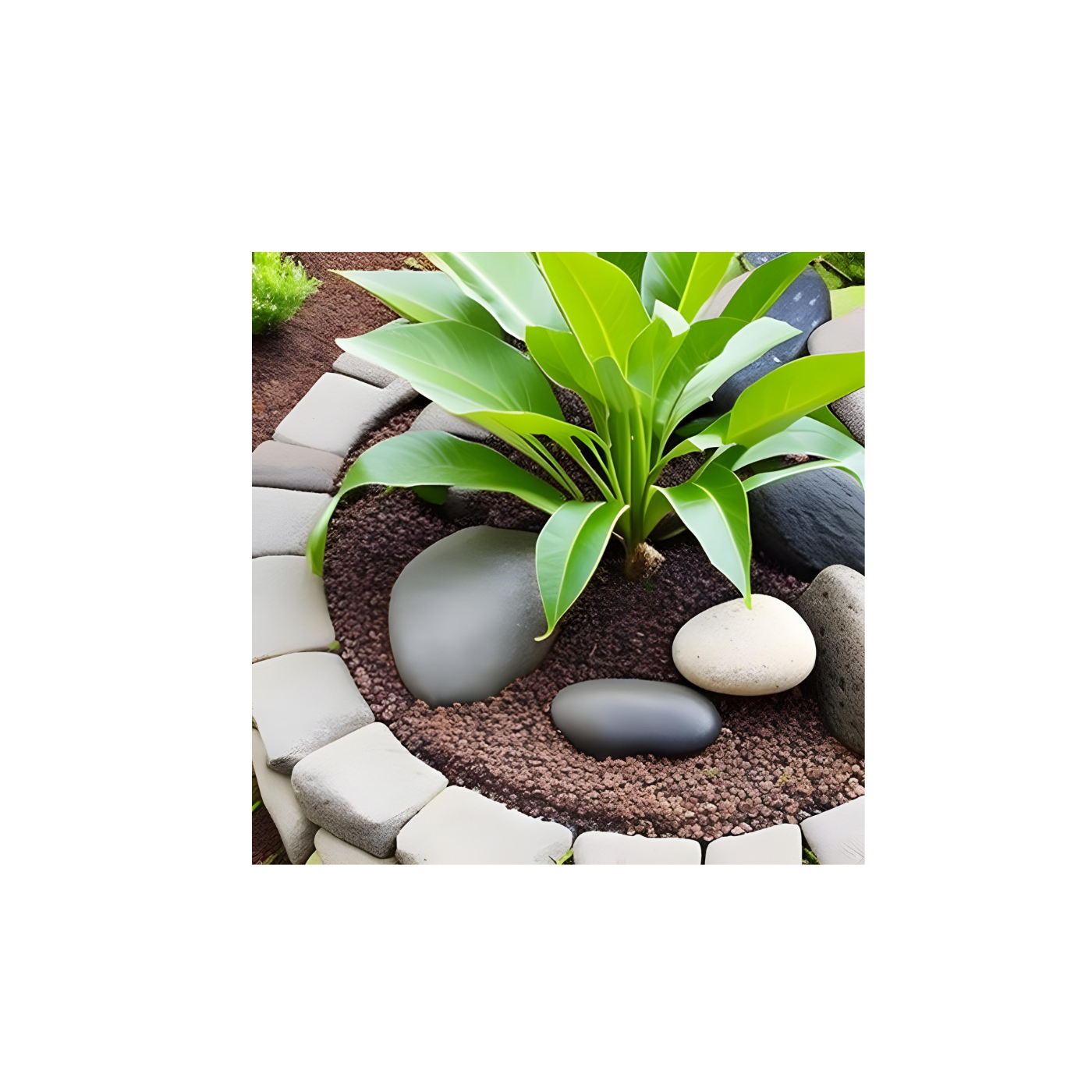Placing stones around plants in your garden or landscape can provide some great benefits. Stones help retain moisture, suppress weeds, protect plants, improve drainage, and add visual interest. With the right approach, stones can transform the area around your plants.
Benefits of Putting Stones Around Plants
Here are some of the top reasons you may want to use stones around your plants:
Retain Moisture
Rocks absorb water and release it slowly over time. This creates a reservoir of moisture in the soil that plant roots can access as needed. The rocks prevent moisture from evaporating rapidly. Your plants will need less frequent watering.
Suppress Weeds
With a thick layer of stones surrounding plants, weed seeds have difficulty finding the bare soil they need to sprout. Less sunlight also penetrates the stones, further inhibiting weed growth. The rocks form a weed barrier far more effective than mulch alone.
Protect Plants from Pests
Creating a physical barrier between plant foliage and the surrounding soil can deter crawling insects and soil-borne diseases. The stones keep slugs, snails and other pests from reaching tender leaves and stems. This reduces pest damage.
Improve Drainage
In dense or clay soils, a layer of gravel stones beneath the mulch allows excess moisture to drain away readily after watering or heavy rain. Good drainage prevents plant roots from getting waterlogged.
Add Visual Interest
An array of colored and textured stones around plants adds beauty and contrast to the landscape. Paired strategically with foliage colors, stones create an aesthetically pleasing scene. They provide a backdrop that makes flowers and leaves pop.
What to Consider Before Adding Stones
While stones offer clear benefits, they aren’t ideal for every situation. Keep these considerations in mind:
- Stone size matters. Tiny pebbles scatter and wash away while oversized boulders may interfere with plants. Select a size in scale with the plantings.
- Color and texture should complement the overall garden scheme. Avoid jarring contrasts that don’t fit your style.
- Stones grouped artistically look better than careless, random placement. Take time to set stones in an intentional, attractive layout.
- In very hot, sunny areas, light colored stones may reflect excessive heat onto plants. Use protective mulch.
- Heavy stones compact the soil over time. Leave space between stones for air and water movement in soil.
- Remove stones before planting to thoroughly prepare soil. Scatter them atop mulch after planting.
By taking into account these factors when incorporating stones in your garden, you can maximize benefits while avoiding potential drawbacks.
Best Practices for Putting Stones Around Plants
Follow these tips to add stones effectively:
Choose Appropriate Stones
Select stones sized in proportion to the mature plant – about 2-3 inches for smaller perennials or groundcovers. Larger 6-8 inch stones suit bushes and small trees. Angular gravel stones provide looser spacing for air and water circulation. Rounded river rocks neatly cover soil. Match stone colors to foliage or flowers.
Prepare the Area
Remove existing grass, weeds or mulch from the zone where stones will be placed. Loosen soil at least 6 inches deep with a shovel or tiller. Level the area for a uniform foundation. Mix in compost to enrich soil for healthy plants.
Lay Landscape Fabric
Optional, but fabric creates a sturdy base layer and further deters weeds. Cut X-shaped openings where each plant will be located. Secure fabric edges with stakes. Use porous, breathable fabric that allows water through.
Arrange Stones Purposefully
Place larger accent stones at corners first, then fill in areas between with smaller stones. Use enough small filler stones to fully cover soil between plants. Follow lines of hardscape borders or curves. Stand back periodically to check appearance.
Top with Mulch
Apply a 2-3 inch layer of shredded bark mulch over the stone layer surrounding plants. Mulch retains moisture while allowing air exchange. Replenish mulch annually as needed. For a polished look, contain mulch with a stone or metal border.
Maintain the Area
Refill gaps where stones get displaced over time. Remove fallen leaves and debris promptly. Check monthly for weeds and pull any sprouting up immediately. Reapply fresh mulch each spring. Every few years, remove stones and recondition soil for vigorous growth.
Positioning stones artfully around planting areas results in a landscape that is functional, visually appealing, and easier to care for. With some planning and regular upkeep, stones can create a stunning, low-maintenance backdrop for healthy plants to thrive.
FAQs
Can all plants grow around rocks?
Most plants can thrive with stones placed properly. The key is choosing compatible stones and leaving space for roots and water.
How do I place stones around plants professionally?
For a natural look:
- Use a variety of stone sizes and shapes
- Flow the stones from large at the base to small at the top
- Incorporate the stones into the overall planting bed design
Will rocks around plants hurt the roots?
Rocks will only damage roots if placed directly on top of them, restricting water and air access. As long as stones are spaced around – not on – plant roots, they should be fine.
With careful planning and compatible stones, surrounding plants with rocks can benefit them while beautifying your landscape design. Just be sure to choose stones based on their material, leave space for plant roots, and water thoroughly during establishment.

